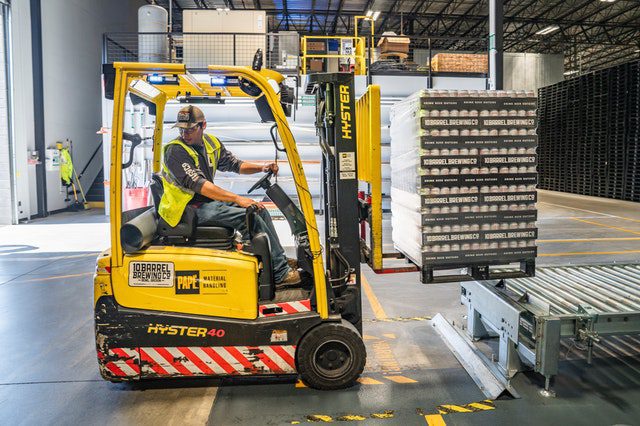
The key skill of a decent logistics manager is knowing how to reduce shipping transit time. By doing so, you make overall shipping far more efficient and cost-effective. But unfortunately, cutting down transit time is easier said than done. Sea freight takes longer than other transportation means such as air freight. That is why we will use this article to showcase a couple of crucial aspects to tackle and help you get a better idea of why reducing ocean shipment transit time is so worthwhile.
Why is it valuable to reduce sea freight average transit time?
There are two significant benefits to reducing ocean freight transit time. First and foremost, your shipments are more reliable. The less time your shipments spend in transit, the less likely it is for mishaps, accidents, and delays to occur. And by studying how to reduce the duration of sea freight transit, you will also learn how to mitigate these unforeseen circumstances and avoid inefficient cargo options. This focus on efficiency will help you set yourself up as a company with a reliable shipping service, which is something few companies can boast about.

Having a reliable supply chain is something that all companies value.
Secondly, the less time your shipments spend during sea freight, the less they will cost. This, of course, isn’t always the case. Sometimes it will cost you a bit more to prioritize a straightforward, time-efficient route than to settle for a couple of delays. But, in the long run, your efforts to reduce the average transit times of sea freight transit will only lead to reduced costs in shipping. Managing your transit time well will also help you set up efficient routes and build a reliable, cost-effective supply chain.
Different ways to tackle ocean freight transit
Before we start, it is essential to note that creating a time-efficient sea freight transit is not a one-and-done deal. It is something that you actively need to work on and improve. This holds especially for integrating your ongoing shipping system with new technologies and connecting it to local truck and rail shipping companies. With this in mind, try to take the following advice as simple guidelines for improving your sea freight transit and not as a single project that you need to complete.
Choosing the right destination port
Before loading a container onto a vessel, try to see which ports the vessel is likely to visit. The more destinations there are between your loading and unloading, the longer it will take for the shipment to arrive. Ideally, your shipping vessel won’t make any stops between your port and the port your container is headed. However, this is rarely the case. Instead, you need to research which vessels stand to visit the least number of ports and opt for them.

Picking the right ports is one of the best ways to reduce transit times
The distance between them further complicates choosing a destination port. While having the least number of stops is a good rule of thumb in the sea freight industry, it isn’t wise to only adhere to it. For instance, it will take a vessel far longer to go from NYC to Tampa and then set sail overseas than it would to start from NYC and visit Philadelphia, Paulsboro, Baltimore, and Norfolk harbor before taking off. Knowing the exact port locations and understanding the estimated shipping time is vital for making these estimates.
Choosing the right vessel and container
Not all vessels provide the same service. Different vessels may only dock at specific ports. This enables them to have faster sea freight, as they are unlikely to make as many stops. It is also worth noting that different vessels sail at different speeds. This is why you need to track both the average speed rate and the likely stops the vessel will make. Loading and unloading speed can also differ between vessels. And when all these factors pile up, you can quickly end up with drastic differences in transit time.

Keep in mind that it is possible to ship items overseas without using containers
The vessel that you opt for will, in large part, be limited to the container you choose. While most people opt for a standard 20×40 feet container, it is worth noting that there are other options. And some can make your transit time notably shorter simply by being more suitable for specific vessels. Furthermore, certain types of containers can be much faster to unload, reducing shipping time. So, make sure that you explore several options before you make your choice.
Pay attention to terminal congestion
Once you send off your shipment, you essentially have no control of how long it will spend in transit times. The steamship line controls the terminals. And only they know how efficient their unloading will be. But, one thing you can do is keep an eye out for terminal congestion. If you know that a particular terminal is currently facing significant shipping transit time, you can try to avoid that port altogether. If you can’t find info about a specific destination port, working with third-party shipping companies that have better knowledge of the local situation can be worthwhile. They may be helpful, especially when it comes to international shipping.
Be ready for inspections
Another thing you have no control over is whether your shipments will be subject to inspections. This is why the safest course of action is to assume that all of them will be and have things in order for a quick one. Make sure that you properly label your shipments. And that the paperwork is in perfect order.
Conclusion
As it should be evident by now, it is by no means easy to reduce shipping transit time. When it comes to sea freight optimization, there are a lot of aspects to consider and a lot of factors to keep track of. Fortunately, you don’t have to tackle them all at once. Every element you tackle will add to your supply chain being more efficient. And the more you learn how to manage each aspect, the better you’ll be at tackling the next one.


